Seven tech predictions for the Tour de France from the pits at the Critérium du Dauphiné
What can the dress rehearsal tell us about opening night at the greatest show on earth?
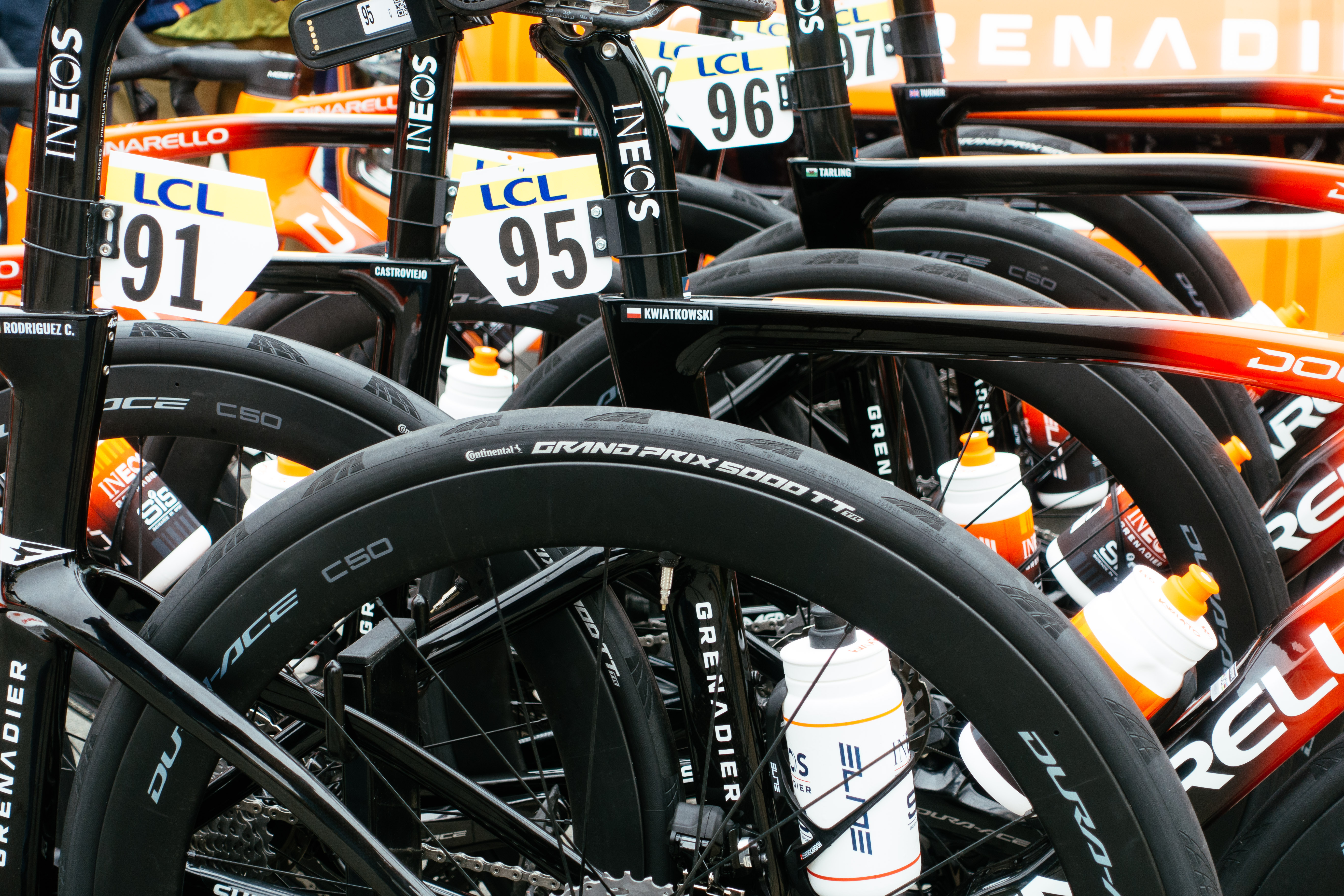
When faced with a protracted stint in the odd, liminal space of the exit lobby of Britain’s second-largest airport, one can do several things. People-watching is my favourite, and as I wait for my meandering coach from Gatwick to Bristol there is a constantly revolving carousel of weary travellers, a fair few Taylor Swift fans returning home from Lyon, and chauffeurs awaiting their charges nursing ever-stagnating cups of Pret A Manger coffee.
I cannot, however, watch people for two hours; I’d go mad. I also cannot bring myself to read one of the magazines or newspapers from the paltry selection on offer in one of the innumerate WHSmith outlets that seem to proliferate in airports, seemingly in defiance of the plight of their high street counterparts.
What I can do instead is try and coalesce what I learned wandering the pits at the Critérium du Dauphiné the past few days. I saw four new bikes, double the new bike cohort from last year, and so an easy first prediction is ‘we’re going to see new bikes at the Tour de France’. This is a bit like saying ‘we’re going to see a yellow jersey at the Tour de France’, though, given marketing executives' collective aim to launch their new model at the biggest race of the year, inevitably leading to all of them getting lost in a noise of headlines. If you want to get really nerdy with all the tech from the Dauphiné, my bumper Dauphiné tech gallery is now live.
The new bikes - a new Pinarello Dogma, a new Trek Madone or Emonda, a new Canyon Aeroad, and a new Willier all-rounder, took the headlines and make up the bulk of my tech gallery snaps, but behind all this, there are some trends that should carry into the Tour. I am at the end of a long day, so if any of these seem a little wide of the mark then feel free to argue amongst yourselves on X to your heart’s content.
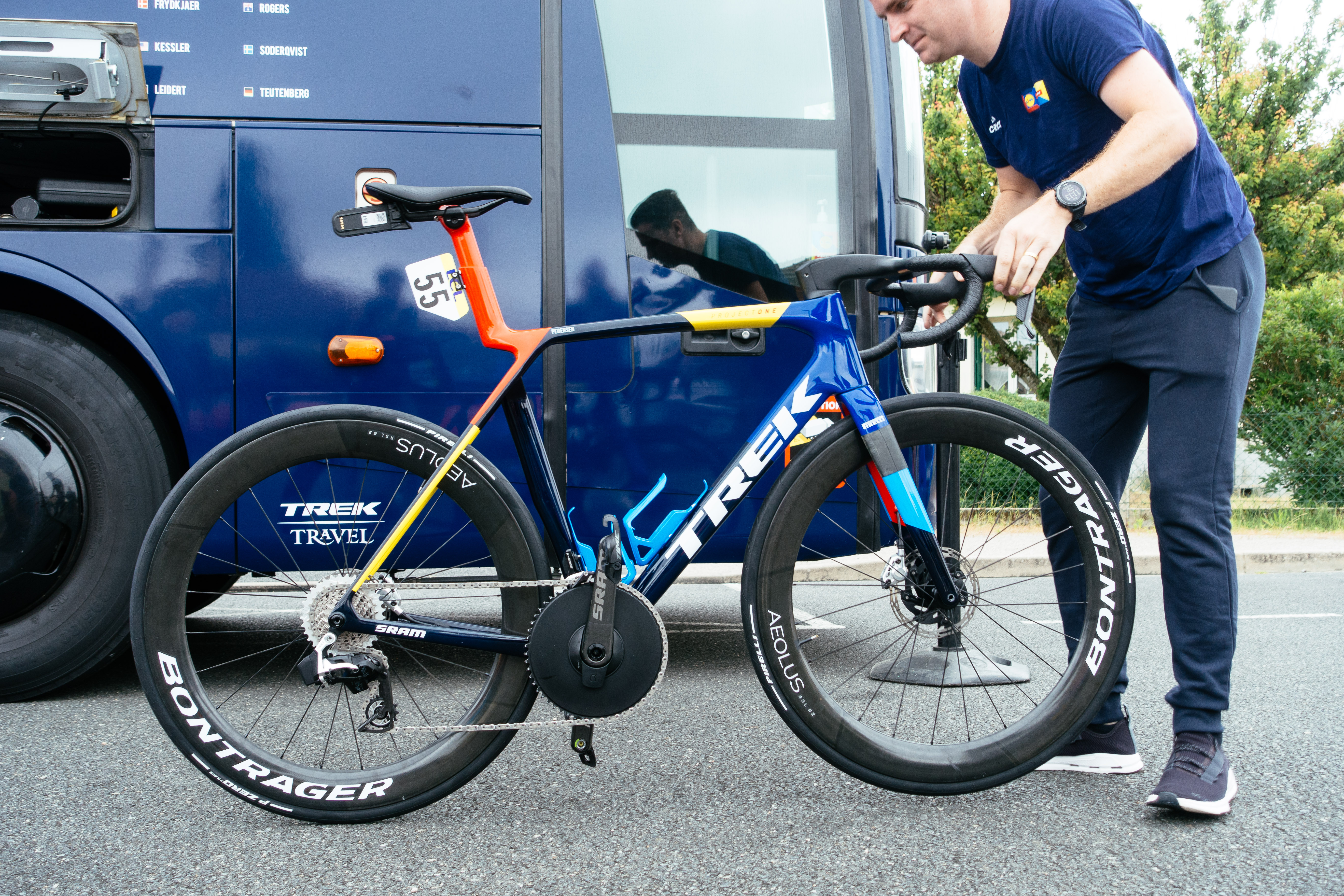
1. ‘One bike to rule them all’ is back
With each new bike that comes to market, it seems the industry is reverting back to its old ‘one bike to rule them all’ tricks. While this adage was mostly used when referring to gravel bikes, it seems like it’s being used once again but for top-tier race bikes. It should be noted that I don’t think any marketing exec has signed off on a campaign slogan as hackneyed as this for a while, but slogans aside the bikes being brought to market in the last 18 months or so nearly all seek to be good over all racing terrains.
If you’ll forgive me a list, we now have the Specialized Tarmac SL8, the Cannondale SuperSix Evo, the unreleased new Trek, the unreleased new Wilier, the new Pinarello Dogma F, the Colnago V4Rs and the BMC TeamMachine R. I strongly suspect that we will see the new Canyon Aeroad being used pretty exclusively too, though the german brand does seem to be bucking this trend.
While it may irk those in the comments section who often (quite rightly sometimes) complain that brands keep changing the goalposts in terms of telling consumers what they want, having a single race bike per rider (plus the spares), is at least a more sustainable approach than bringing two different models per rider, especially when you take into account the time trial bikes too.
The latest race content, interviews, features, reviews and expert buying guides, direct to your inbox!
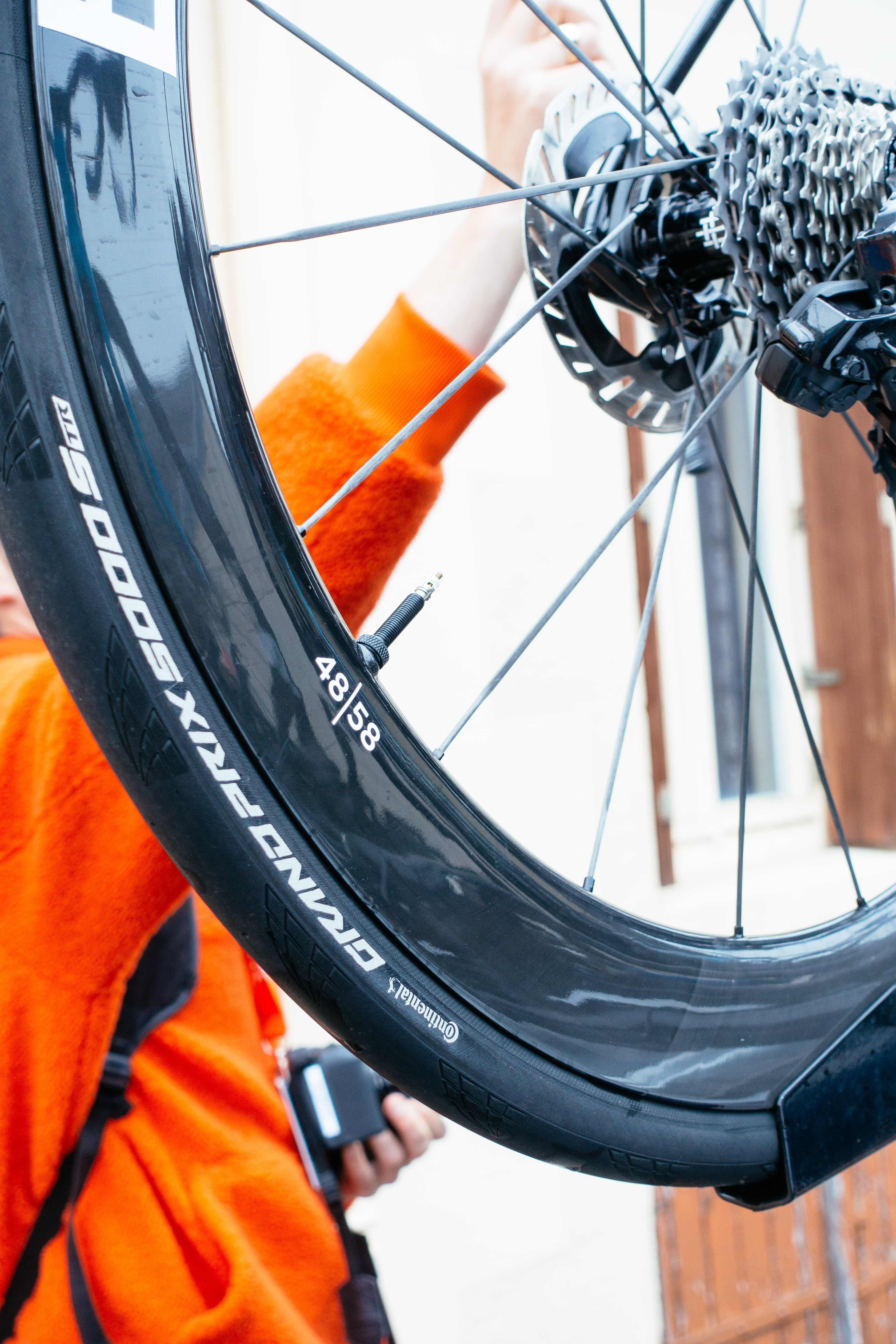
2. Wide tyres aren’t just for the Classics
Paris-Roubaix this year was a new high-water mark for fat tyres in the pro peloton. We saw teams using tyres of 34c widths at times, and while last year 28c was the norm, wandering the pits on stage one and two of the Dauphiné it was clear that 30c is the new standard. A notable exception was on the Wilier bikes of FDJ, which still rolled on 25mm tubular Continental Competition Pro Ltd tyres. Plus ça change.
As internal rim width increases, primarily it must be said due to consumer demand and the demands of ‘all-road’ machines, and gravel bikes too, wider tyres are often more aerodynamic than narrower ones, as there’s a smoother interface between tyre and rim. More grippy, more comfy, and faster, plus another added benefit that I’ll go into next.
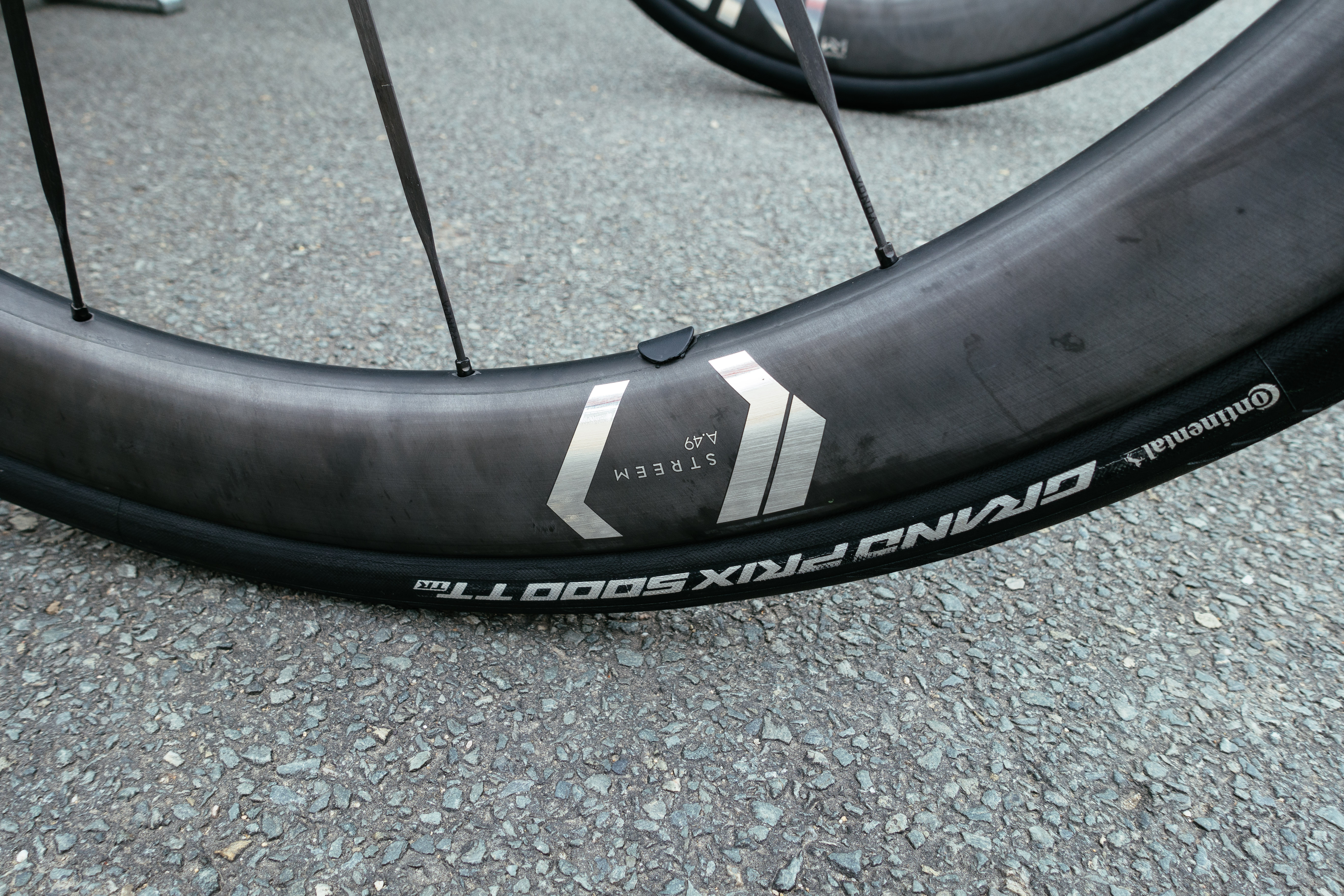
3. Time trial tyres for the road
TT tyres are nothing new. They’re usually an easy wattage upgrade, but the cost always came in terms of puncture resistance. Some of them are so puncture-prone they may as well be constructed from saliva and crossed fingers.
The advent of tubeless technology has gone some way to help this, but the pressures inside a race-ready 28c tyre are often too high for the goo to do its job properly. Wider tyres mean lower pressures, which in turn means that tubeless sealant has a better chance of working properly. This, in turn, means teams are now risking using TT tyres on road stages to get an advantage.
In the pits I saw several teams using Continental GP5000 TT tyres, most notably Ineos and UAE Team Emirates. I didn’t spot any Vittoria teams using the equivalent Corsa Pro Speed, but I have done at other races, so expect to see both options out in force at the Tour. This should mean the inevitable tacks thrown in the road by protesters should have an even greater chance of disrupting things.
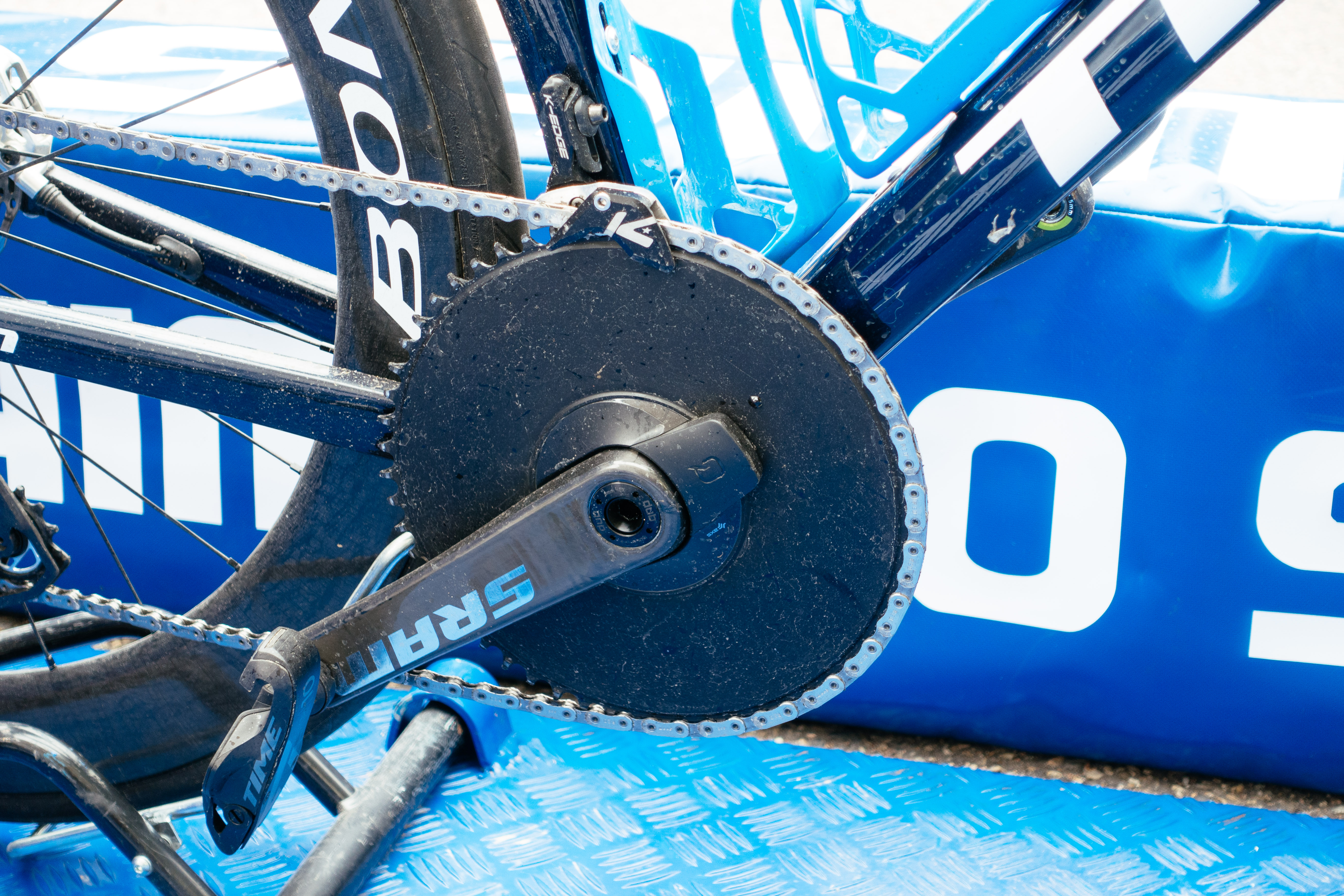
4. More 1x, more often
The single front ring is now a staple for most SRAM sponsored teams. Mads Pedersen won stage one of the Dauphiné on a 1x setup, but that in itself is far from novel; he uses a big ring almost exclusively.
The launch of the new SRAM Red a few weeks ago did include 1x options, but what we didn’t expect was to see a new 13-speed SRAM Red come only a few days later at Unbound. This greater number of sprockets, promising smaller steps between each, will likely rally more riders around the 1x flag, with the promise of better aerodynamics and a more secure chain.
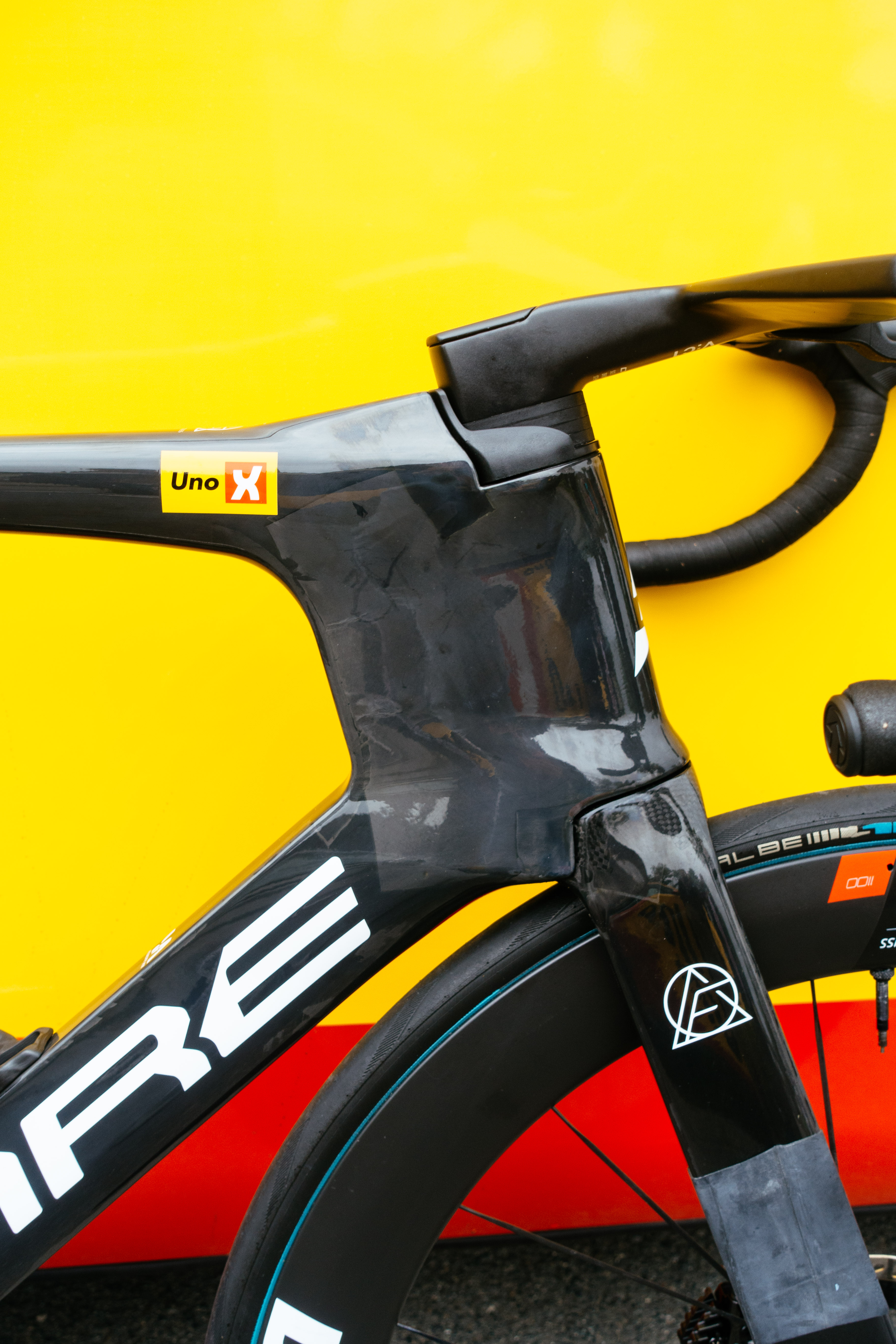
5. Dull paint jobs remain, even on fancy new bikes
New bikes are exciting, and the new Trek in particular has a delightful paint scheme. The new Pinarello Dogma, on the face of it, very much resembles the old one in terms of paint, and the new Wilier is currently black. The Canyon Aeroad is navy blue, which is smart, but ultimately it’s like choosing to have dinner with an accountant rather than an insurance salesman.
As climbing bikes become more aero and put on some grams, and aero bikes look to get lighter, paint is an easy thing to cut. We’ve seen it time and time again - on key stages, key riders get a ‘special’ all-black bike. They’re not special, they’re boring. Nobody sane can say the black Colnago V4Rs is more fun than the all-pink one. Remco Evenepoel has it right. While it may not be to your tastes, his bike, bechromed and resplendent, is at least eye-catching. It is special.
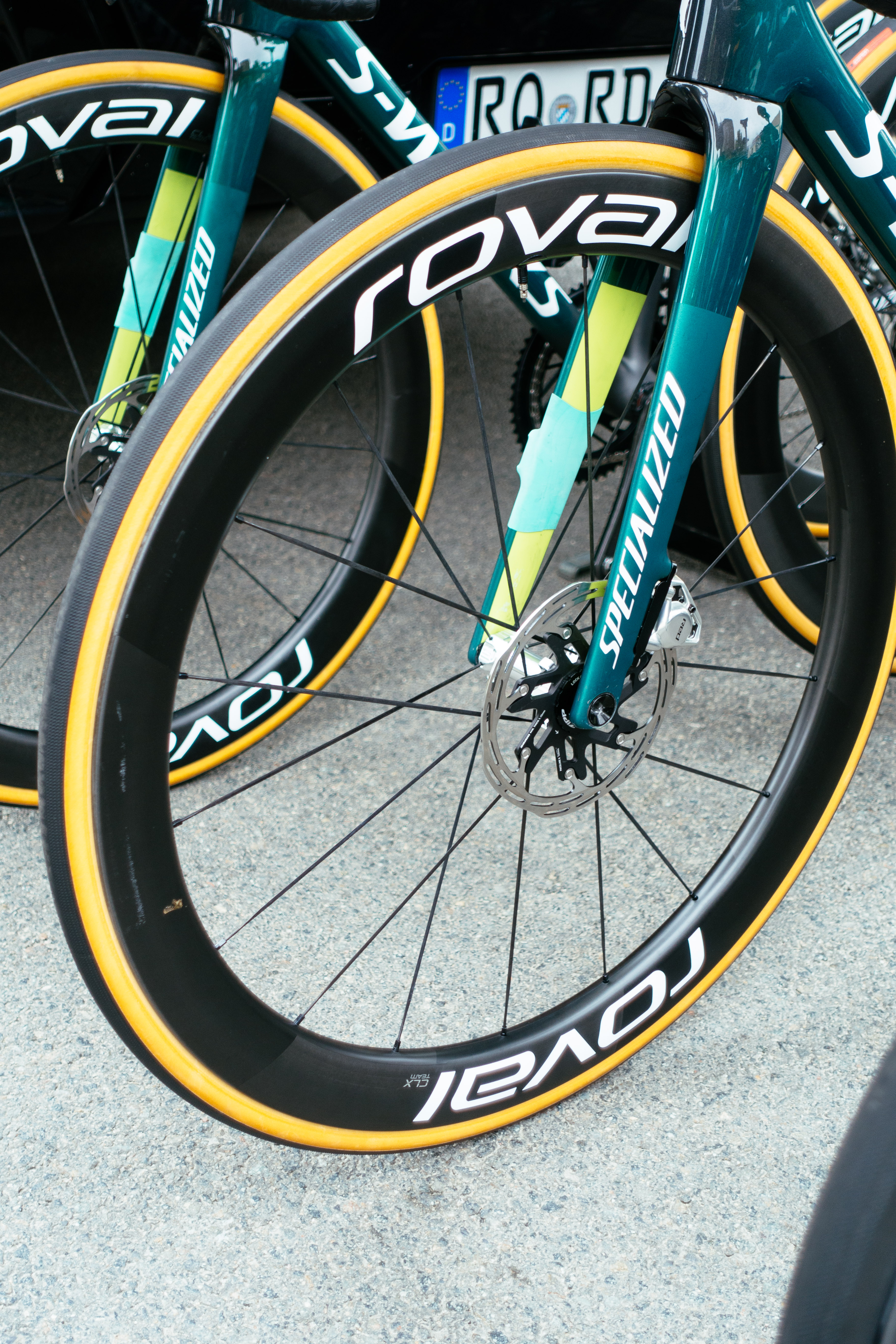
6. A surprise comeback for tubes
Inner tubes are going to come back. This sentence works best if, while reading it, you picture in your mind’s eye that Cilla Black surprise surprise meme.
Tubeless is great, especially if you drink the Kool-Aid (not the sealant!!) and run wider road tyres. Latex inner tubes though are faster. Speaking to the Bora-Hansgrohe mechanic after seeing the team bikes running a mix of tubes and tubeless it seems its now just down to personal rider preference. There’s a few watts in it, I’m told, and so I suspect those with performance ambitions will opt for the faster setup, and those that want more comfort or reliability will use tubeless.
The stage itself may also dictate things. The gravel stage will likely see everyone using goop in their tyres, but now that tubeless has well and truly caught on there seems less of a three-line whipping operation from the sponsors to make everyone use sealant, which is a bit mad really now that everyone is using wider tyres and it’ll finally work properly and not explode off hookless rims at random.
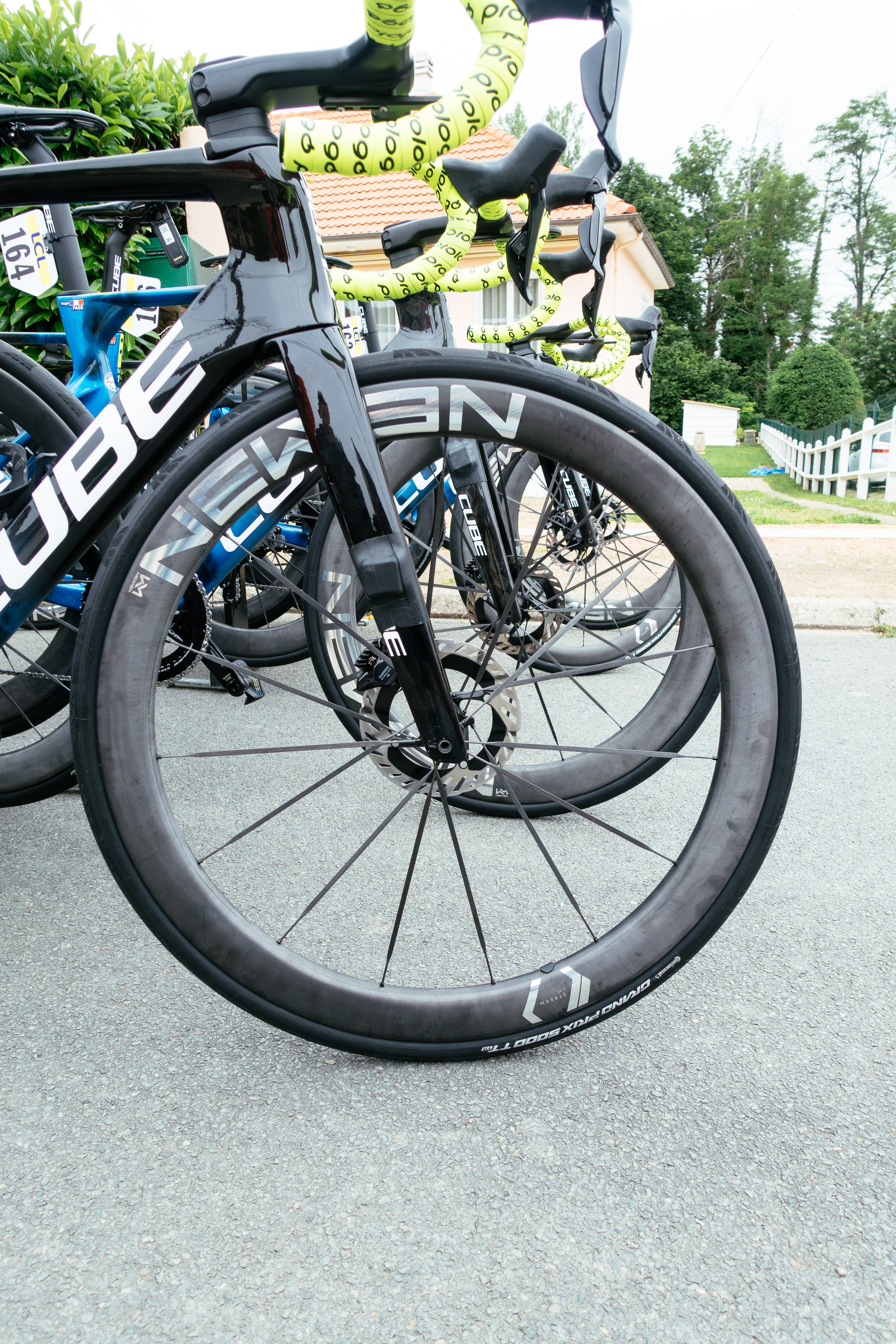
7. Mixed wheelsets will debut
I always like to throw in a bit of a wildcard, and this years is mixed wheelsets. I know, we’ve had mixed depth wheelsets for yonks, but it’s always been a shallower wheel at the front and a deeper wheel at the back, mostly for handling reasons; a sudden sidewind has more impact at the front of the bike, where less weight rests.
Recently though new bikes seem to be adopting a design ethos of aero at the front and lightweight at the rear. The leading edge is where aero is most important, and at the back the air is dirty and so this is where weight savings are made.
At Roubaix we saw Soudal-QuickStep doing this with a mixed Roval Rapide CLX front and a Terra gravel wheel at the rear, to maximise aero and add some much needed puncture protection at the back. I see no reason we couldn’t see riders on key mountain stages running a deeper front wheel than rear, maximising the aero gains for the valleys, and potentially helping to hit the 6.8kg minimum weight for the longer climbs.
I say I see no reason… I see one reason, and that is that it would look awful. Cycling is an aesthetic sport, and pros like to look the part. They often eschew performance gains for aesthetic reasons, so this will probably befall someone like Ben Healy or Victor Campenaerts, who are so beloved of tech journos because they actually do their homework.

Will joined the Cyclingnews team as a reviews writer in 2022, having previously written for Cyclist, BikeRadar and Advntr. He’s tried his hand at most cycling disciplines, from the standard mix of road, gravel, and mountain bike, to the more unusual like bike polo and tracklocross. He’s made his own bike frames, covered tech news from the biggest races on the planet, and published countless premium galleries thanks to his excellent photographic eye. Also, given he doesn’t ever ride indoors he’s become a real expert on foul-weather riding gear. His collection of bikes is a real smorgasbord, with everything from vintage-style steel tourers through to superlight flat bar hill climb machines.